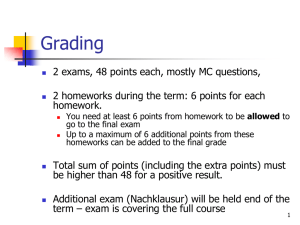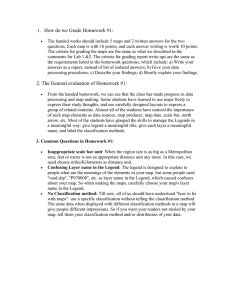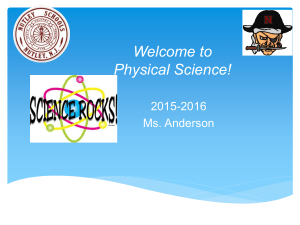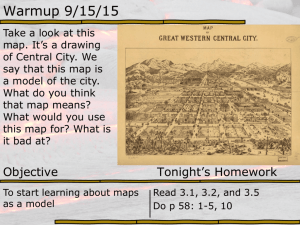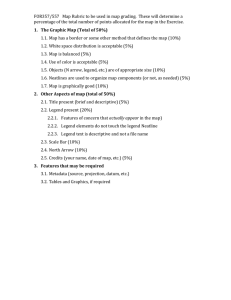11.520: A Workshop on Geographic Information Systems
advertisement
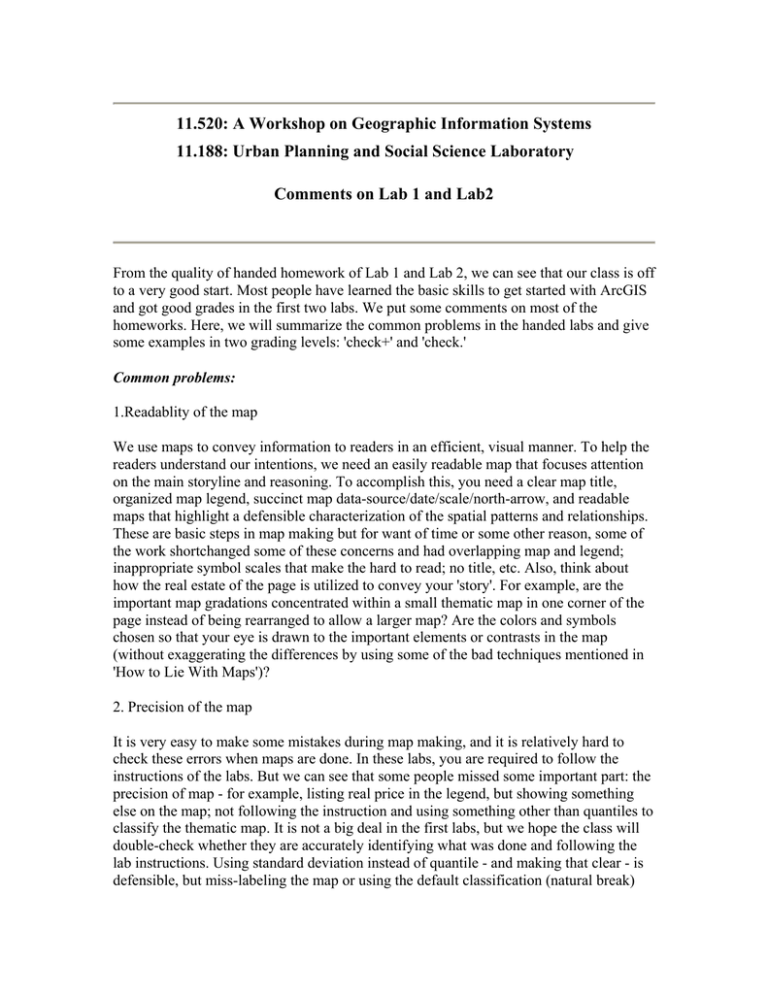
11.520: A Workshop on Geographic Information Systems 11.188: Urban Planning and Social Science Laboratory Comments on Lab 1 and Lab2 From the quality of handed homework of Lab 1 and Lab 2, we can see that our class is off to a very good start. Most people have learned the basic skills to get started with ArcGIS and got good grades in the first two labs. We put some comments on most of the homeworks. Here, we will summarize the common problems in the handed labs and give some examples in two grading levels: 'check+' and 'check.' Common problems: 1.Readablity of the map We use maps to convey information to readers in an efficient, visual manner. To help the readers understand our intentions, we need an easily readable map that focuses attention on the main storyline and reasoning. To accomplish this, you need a clear map title, organized map legend, succinct map data-source/date/scale/north-arrow, and readable maps that highlight a defensible characterization of the spatial patterns and relationships. These are basic steps in map making but for want of time or some other reason, some of the work shortchanged some of these concerns and had overlapping map and legend; inappropriate symbol scales that make the hard to read; no title, etc. Also, think about how the real estate of the page is utilized to convey your 'story'. For example, are the important map gradations concentrated within a small thematic map in one corner of the page instead of being rearranged to allow a larger map? Are the colors and symbols chosen so that your eye is drawn to the important elements or contrasts in the map (without exaggerating the differences by using some of the bad techniques mentioned in 'How to Lie With Maps')? 2. Precision of the map It is very easy to make some mistakes during map making, and it is relatively hard to check these errors when maps are done. In these labs, you are required to follow the instructions of the labs. But we can see that some people missed some important part: the precision of map - for example, listing real price in the legend, but showing something else on the map; not following the instruction and using something other than quantiles to classify the thematic map. It is not a big deal in the first labs, but we hope the class will double-check whether they are accurately identifying what was done and following the lab instructions. Using standard deviation instead of quantile - and making that clear - is defensible, but miss-labeling the map or using the default classification (natural break) without making that clear is a more serious error. In general, it is a good idea to annotate the legend so that the classification method is clarified (just putting 'quantile' in parentheses under the legend title is often enough, and quite informative). 3. Art of the map It is easy to undertand that for a map the more beautiful, the better. To be sure, there is an art as well as a science to good map making, and all 'experts' don't agree on one 'right' or 'best' way to present the data. Nevertheless, after you make sure that you have the right contents and necessary elements, spend a little time attending to the graphic design of your maps, and you will have an improved map that does a much better job of conveying the desired information to the reader. Two Examples of good homeworks. These are three maps picked from handed homeworks with names erased (if you find that this is yours, and you do not want it to be posted, please let 11.520 staff know). The first fills most of the page with the Cambridge map and chooses appropriate sizes, words, placement, etc. to be informative and balanced. The symbology for the sales could still be improved facilitate comparing sales price with the neighborhood income. The second example does a good job of fitting the two maps and annotations on one page in a readable manner. One improvement would be to make the roads less pronounced - for example, by making the secondary roads a lighter grey - so that the roads are as much of a distraction from reading and comparing the thematic map.
